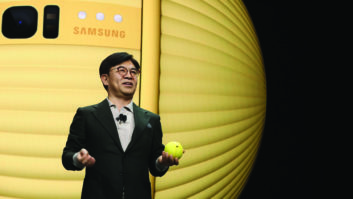Ames, Iowa — Scientists at the U.S. Department of Energy’s Ames Laboratory here say they have perfected a magnetic refrigerator that uses water instead of ozone-depleting coolants, runs silently at room temperature, and requires only a fraction of the electricity needed to operate conventional units.
The system, based on a 1920s technology, uses a magnetic field to heat a powdered form of the metal gadolinium. The metal, contained in a rotating ring, cools as it leaves the field, which in turn cools about a soda can’s worth of water circulating around it.
Until recently, the mechanism required a large, cryogenically cooled superconducting magnet that rendered the unit impractical for home use. Now, a team led by D.O.E. metallurgist Karl Gschneider, Jr., and Carl Zimm of Astronautics Corp. of America have successfully replaced the superconducting magnet with a smaller, custom-designed permanent magnet that has dramatically reduced the refrigerator’s size.
Another breakthrough came when Ames researchers developed a process for producing large quantities of gadolinium, whose magnetocaloric response is twice that of iron.
Astronautics Corp., which took over the project from the Los Alamos National Laboratory in 1985, and is sharing the multimillion-dollar research costs with the federal government, hopes to sell the patent rights to a major appliance manufacturer. The company says the technology could also be applied to air conditioners, and that consumers could see the first magnetic appliances within eight years.
The devices would run on 110 volts of power, and eventually batteries, since electricity is used only to spin the ring and drive the water pumps. Initial pricing would exceed that of current top-of-the-line models, although the energy savings would compensate for the higher ticket within five years, Astronautics said.










